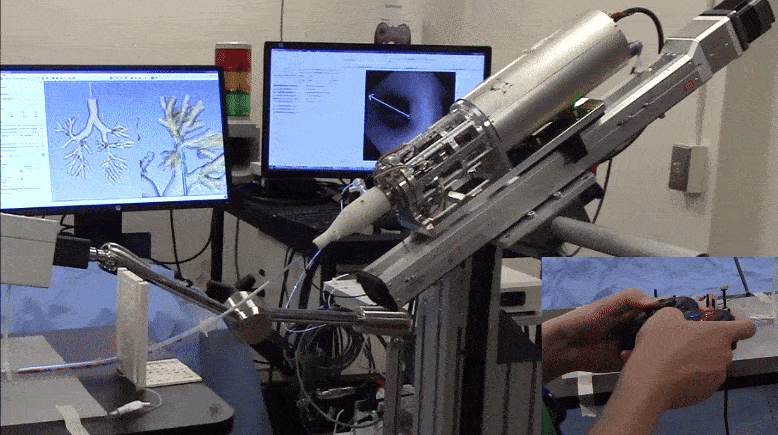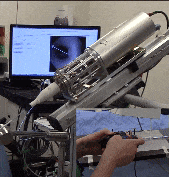
The benefit of the continuum robot in bronchoscopic biopsy is being confirmed. However, the metrics used in the previous validation studies are still limited. The objective of this study is to validate a multi-section continuum robot with first person view control and technically quantify the performance of the robot using a clinically realistic phantom with a wide range of skills in conventional manual bronchoscopy.
We developed a three section robotic bronchoscope with first-person view control vie a commercial gamepad. To assess the performance of the robotic bronchoscope, six physician operators were recruited and tasked to operate a manual and the robotic bronchoscope in patient-derived lung phantoms. The metrics collected were the furthest generation count of the airway the bronchoscope reached, force incurred to the phantoms, and NASA-Task Load Index. Only ten minutes were given to the physician operators before the data collection to practice with the robotic and the manual bronchoscope. After the ten minutes of the practice session, no advice from investigators about how to operate the robotic bronchoscope was given.
The noticeable advantage of the robotic bronchoscope was that it could reach at least the 5th generation count of all paths in the phantoms without a failure, regardless of the skill level of the operators. Considering the fact of other’s previous study that inserting a bronchoscope into the 5th generation count leads to a higher diagnostic yield of transbronchial biopsy, our results suggest that the robotic bronchoscope is capable of providing a higher diagnostic yield with physicians of all skill levels, including novices. In addition, our analysis of the subscales of NASA-TLX score shows that operating the manual bronchoscope is physically more demanding than operating the robotic bronchoscope.

